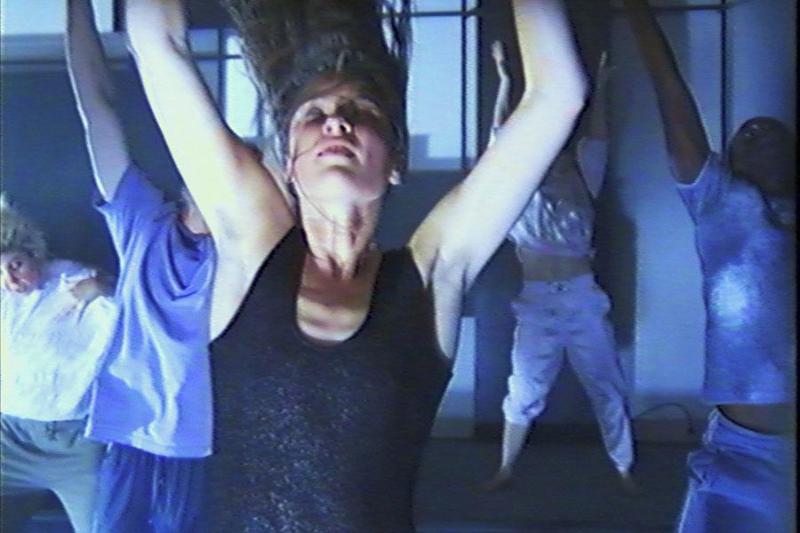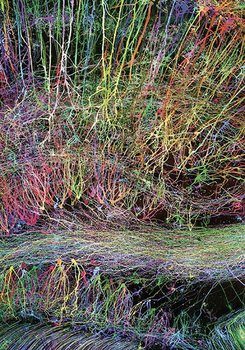Exhibition
Jeremy Shaw
Phase Shifting Index
26 Feb - 27 Jul 2020
26 Feb - 27 Jul 2020

The event is over

In the framework of “Mutations/Creations”, the exhibition devoted to Jeremy Shaw presents an original and immersive project dabbling in science fiction and alternative cultures. Shaw’s undertaking lies at the crossroads of several contemporary issues which touch on philosophy, anthropology, sociology, science and more particularly cognitive and neuroscience, not to mention the latest technological advances such as bionanotechnologies. His work is a visual and sound representation of these multiple developments in research, taken to a fictional dimension which flirts with science fiction and alternative cultures.
With “Mutations/Creations” the Centre Pompidou becomes a laboratory for creation and innovation at the frontiers of art, science and engineering. Each year, the programme brings together artists, engineers and scientists. For its fourth edition, “Mutations/Creations” pursues its prospective research through two exhibitions. “Neurons, simulated intelligence” associates technical progress and artistic representation around artificial intelligence. “Jeremy Shaw” presents a unique immersive project, which flirts with science-fiction and alternative cultures.

Presentation by the curator
Based in Berlin and originally from Canada, Jeremy Shaw has pursued his artistic, audio and often immersive artistic work for more than fifteen years, following a period from 1996 to 2009 spent travelling throughout the world as a DJ with his Circlesquare project. It is obvious that those years are not unrelated to the very nature of his artistic work, where music and the sound dimension play an important role.
Shaw's practice is located at the intersection of several contemporary issues creating a stir in the world of philosophy, anthropology, sociology and the sciences, particularly the cognitive sciences and neuroscience, and lastly, the latest technological progress such as bio-nanotechnologies. His work stands out as an artistic and audio attempt to render an account of these multiple developments in research while projecting them into a fictional field that flirts with science fiction and alternative cultures.
Without establishing hierarchies, Shaw weaves narratives, deriving his inspiration from the psychedelic culture of the 1960s and 1970s produced by the Beat Generation and the most recent progress in neuroscience concerning how the brain functions, while working precisely on perception within the context of his installations. These engage spectators in a veritable multi-sensory experience, thus giving rise to questions in the work and in his experiments, concerning the meaning of the perceiving subject's lived experience. The processes Shaw uses aim to obtain effects comparable to those that interest him in his research. A distortion, even a dissolution, of limits, both by questioning the human aspiration for transcendence at a time when the cognitive sciences are triumphant, and through an artistic method.
Rejected by positivism and Marxist criticism at the end of the 19th and in the 20th century, questions concerning metaphysics, the primary philosophy which focuses on things "beyond the world" i.e. the eternal, prime causes, the divine, lie well and truly at the heart of Shaw's practice. To this metaphysical dimension is added an acute sensitivity to sociology, particularly the sociology of beliefs. Shaw questions the persistence of this fundamental need of human beings for spirituality and beliefs, despite scientific progress that might have led us to expect this need would be replaced by reason and technological progress. In rave parties and the widespread availability of hard drugs, Shaw observes the loss of a certain idealism and a revolutionary desire that typified the 1970s, in favour of consumer-ready fashions and trends. Neuroscience and the cognitive sciences constitute a third element in the work of Jeremy Shaw. He appropriates the new images produced by brain science, such as MRI, spectroscopy and microscopic photography and makes them his own. His work seems to stage scientific imagery detached from a theoretical base, encountering popular beliefs that came into being at the same time as the new technologies.
Jeremy Shaw is presenting his first major museum exhibition in France in the Centre Pompidou with an original immersive project, Phase Shifting Index. This work follows on from the series Quantification Trilogy for which the Centre Pompidou acquired the Liminals video in 2017, following its presentation at the Venice Art Biennale in 2017.
At the entrance to the exhibition the public discovers kaleidoscopic photographs that use images of religious or festive trances subjected to a process of shattering and fragmentation. In addition to these photographs produced for the exhibition, a large installation was designed especially for Gallery 3, Phase Shifting Index. This sound and vision work seems to be the culmination and synthesis of Shaw's earlier installations and research, firstly by virtue of its ambition for an even more intense immersion of spectators. Entering a vast room with a long ramp that produces a claustrophobic feeling, visitors find themselves high up on terraces somewhat overlooking the space plunged in darkness where seven films are projected on seven suspended screens showing groups of dancers that seem to come from different eras performing ritual-type and cathartic movements until they synchronise in a moment of collective ecstasy in one and the same sound and image track.
At the high point of this transtemporal catharsis when the same aspiration for transcendence culminates, for the few remaining minutes, all the screens display computer-distorted images of the faces of the characters in the previous films in an explosion of sound and colour that is disturbing, even agonizing, as if the harmony was suddenly shattered. This disfiguring inspired by biotechnologies produces a feeling of incertitude concerning the future prospects of additions to the human body, just as it simultaneously provokes an aesthetic fascination and a malaise. Shaw thus subverts scientific progress in the same way as he plays with the tools and the sometimes-unresolved questions of the cognitive sciences.
As a confrontation of rational and spiritual aspirations in a future post-human era, the Phase Shifting Index video installation bewitches us as it terrifies us, dissolving the limits of sound and image, stimulating the perceptive nerves of the spectator torn between ecstasy and a terror that is fascinated by itself.
The Centre Pompidou, in association with the Swiss Institute, New York, and the Museum of Old and New Art (Mona), Hobart, Tasmania, coproduced the film presented in the exhibition, showing at the same time in three different forms, beginning in February 2020, in the Centre Pompidou, then in April in the Swiss Institute, and finally in June in the Mona. The Centre Pompidou and the Swiss Institute also came together to co-publish the first complete monograph of the artist in French and in English.
Source :
By Christine Macel
Curator, head of the Department for Contemporary and Prospective Creation, Musée National d'Art Moderne, Centre Pompidou
Curator of the exhibition
In Code couleur n°36, january-april 2020, p. 20-23
Where
Galerie 3
When
26 Feb - 13 Mar 2020
11am - 9pm, every days except tuesdays�1 - 27 Jul 2020
11am - 9pm, every days except tuesdaysRéservation en ligne obligatoire
Partners




